
William Bentinck, 1st Earl of Portland, was a Dutch-born English nobleman who became in an early stage the favourite of William, Prince of Orange, Stadtholder in the Netherlands, and future King of England. He was reportedly steady, sensible, modest and usually moderate. The friendship and cooperation stopped in 1699.
Henry Hyde, 4th Earl of Clarendon and 2nd Earl of Rochester, PC, styled Lord Hyde from 1682 to 1711, was an English Army officer and Tory politician who sat in the English and British House of Commons from 1692 until 1711 when he succeeded to the peerage as Earl of Rochester.
William Gordon, 2nd Earl of Aberdeen, known between c. 1691 and 1720 as Lord Haddo, was a Scottish landowner and Tory politician who sat in the British House of Commons briefly from 1708 to 1709 when he was declared ineligible, being the eldest son of a Scottish peer. He showed some Jacobite sympathies, but took no part in the rebellions.
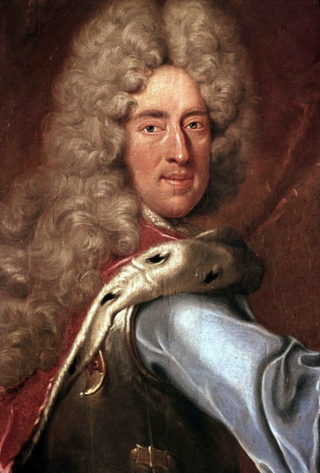
John William III, Duke of Saxe-Eisenach, was a duke of Saxe-Eisenach, and came from the Ernestine line of the House of Wettin.
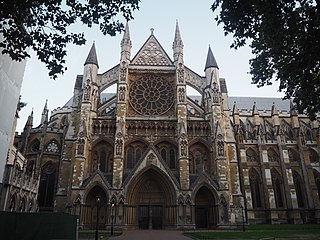
Edward Stanton (1681–1734) was an English stonemason, builder and sculptor.
Henry Bowes Howard, 11th Earl of Suffolk, 4th Earl of Berkshire was an English peer.
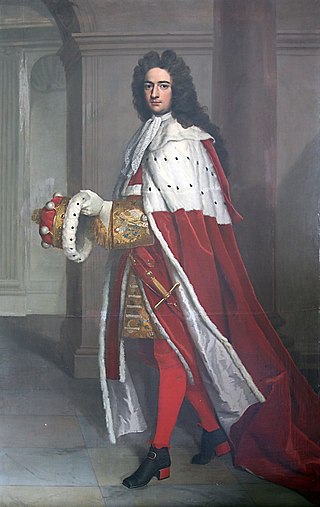
John Ashburnham, 1st Earl of Ashburnham was an English peer, soldier and politician.
The following is the Jacobite line of succession to the English and Scottish thrones as of the death of Anne, Queen of Great Britain, on 1 August 1714. It reflects the laws current in England and Scotland immediately before the Act of Settlement 1701, which disqualified Catholics from the throne.
Sir James Montagu, of the Middle Temple, London, was an English lawyer and Whig politician, who sat in the House of Commons at various times between 1695 and 1713. He became a judge and also served as Solicitor General and Attorney General.

Sir William Courtenay, 2nd Baronet of Powderham Castle, Powderham, Devon, was an English landowner, a leading member of the Devonshire gentry and Tory politician who sat in the English House of Commons from 1701 to 1707 and in the British House of Commons almost continually from 1707 to 1735.

Prince Christian Everhard of East Frisia was a Prince of East Frisia from the House of Cirksena from the day he was born in 1665, but remained under guardianship until 1690.

George Albert was a member of the family of the Cirksena and was the fourth Prince of East Frisia. He ruled from 1708 to 1734.

Walrad Usingen of Nassau, was from 1659 Count, and from 1688 Prince of Nassau-Usingen and founder of Usingen line of the House of Nassau. He served for most of his career as a general in the Dutch States Army.
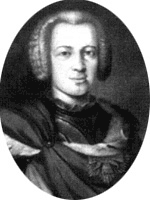
Charles, Prince of Nassau-Usingen, was Prince of Nassau-Usingen from 1718 to 1775.
Henry, Prince of Nassau-Dillenburg was ruler of Nassau-Dillenburg from 1662 until his death.

William Henry, Prince of Nassau-Saarbrücken, was Prince of Nassau-Saarbrücken from 1741 until his death.

Charlotte Amalia of Nassau-Dillenburg was a German regent; regent of Nassau-Usingen from 1718-1732. She was a daughter of Prince Henry of Nassau-Dillenburg and Dorothea Elisabeth, a daughter of George III of Brieg.

John Croker, born in Saxony and known in his youth as Johann Crocker, was a master jeweller who migrated to London, where he became a medallist and engraved dies for English and later British coins and medals.
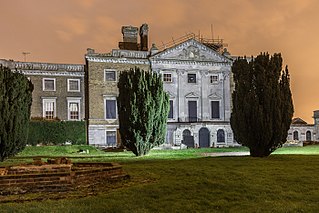
Sir Thomas Webster, 1st Baronet, of Copped Hall, Essex, and Battle Abbey, Sussex, was a British landowner and Whig politician who sat in the English and British House of Commons between 1705 and 1727.













